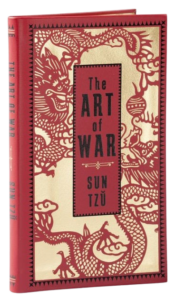If the East has “The Art of War” by Sun Tzu, the West has “On War” by Clausewitz. Broadening the scope, in the East, there are ten major military treatises including “The Art of War,” and in the West, from the Renaissance period in Italy, there are Machiavelli’s “The Art of War” (which includes political strategy) and “The Prince,” along with Clausewitz’s “On War,” written during the Napoleonic era.
The military treatises of the East and West reflect their respective cultural and historical backgrounds, offering a deep understanding of war and strategy. While the Eastern “The Art of War” emphasizes strategic flexibility and the use of enemy psychology, the Western “The Art of War” by Machiavelli and “On War” by Clausewitz focus on the power of the state and political objectives as central to conducting warfare. Unlike other philosophical texts, Chinese military treatises such as “The Art of War” are considered very practical, whereas Clausewitz’s “On War” is seen as highly idealistic. Eastern military treatises reflect the long tradition of Chinese military and strategic thinking. Likewise, Western works analyze the realistic approach to maintaining and expanding power in Machiavelli’s writings, and Clausewitz’s view of war as an extension of politics, providing profound insights into the nature of war and strategic thinking.
There is also a difference in the time periods of these works. “The Art of War” by Sun Tzu is a classic from the Chinese Spring and Autumn Period, while Clausewitz’s “On War” comes from the modern era of Napoleon. Machiavelli lived about 300 years before Clausewitz, during the Renaissance. Clausewitz famously stated that “war is merely the continuation of politics by other means,” and accordingly, he presents ways to win in unavoidable situations of war.
Sun Tzu’s “The Art of War” predates Clausewitz’s “On War” by about 2000 years, making it a classic among classics. However, in China, it is considered closer to a manual on cunning rather than a revered classic.
The “36 Stratagems” commonly used today discuss more realistic methods. Often thought to be part of Sun Tzu’s military methods or even a work by Sun Tzu himself, the “36 Stratagems” are in fact a different book. It seems more appropriate to see the “36 Stratagems” as a collection of military tactics passed down from various sources and refined over time by collective intelligence.


In addition to “The Art of War,” several military treatises have been passed down in the East, likely due to the numerous wars experienced. It is said that during China’s Spring and Autumn period there were 1,211 wars, and during the Warring States period, 468 wars. The strategists from this time are considered part of the Hundred Schools of Thought. Notable military figures include Sun Tzu of Qi, Wu Qi of Zhou, and Wei Liao.
In the 11th century, the Song dynasty organized existing military treatises into military studies, adopting them as subjects for imperial examinations. The seven books compiled at that time, known as the “Seven Military Classics” (including “The Art of War” by Sun Tzu, “Wuzi,” “Sima Fa,” “Wei Liaozi,” “Li Weigong’s Questions and Replies,” “Three Strategies,” and “Six Secret Teachings”), were later expanded to include “General Garden – Zhuge Liang,” “36 Stratagems – author unknown,” and “Sun Bin’s Art of War” by Sun Bin, referred to collectively as the “Ten Military Classics.”
These works range in focus from short-term tactical approaches favored by the weaker states to long-term strategies preferred by stronger states, reflecting an understanding of warfare based on humanity and morality, to the oldest military strategies dating back 3000 years written by Jiang Taigong.
- The Art of War by Sun Tzu – A foundational text in military strategy and tactics, composed of 13 chapters, each dedicated to a different aspect of warfare.
- The Six Secret Teachings – A collection of military tactics and strategies attributed to the legendary military strategist Jiang Ziya.
- Wuzi – A text attributed to Wu Qi, a well-known military general from the Warring States period.
- The Book of Wei Liaozi – Focuses on the importance of statecraft and the philosophy of using warfare as a last resort.
- The Three Strategies of Huang Shigong – Another classical work that outlines three different levels of strategic thinking.
- The Questions and Replies Between Tang Taizong and Li Weigong – A dialogue on military tactics and strategies between Emperor Tang Taizong and the general Li Jing.
- The Methods of the Ssu-ma (Sun Bin’s Art of War) – A treatise on military strategies attributed to Sun Bin, an alleged descendant of Sun Tzu.


답글 남기기